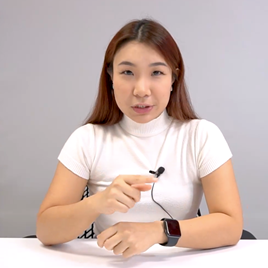May 01 2024 / Round the Table Magazine
Five strategies to get referred up
Topics Covered
Have you noticed that most clients refer you down to prospects on the economic ladder? This isn’t absolute, but it is generally the case. There are two key elements for getting referred up — the right strategies and the right words. One without the other will surely weaken your results. Here are a few steps and scripts to help you get referred up to high-net-worth (HNW) clients.
1. Find who is the right fit
Before you work on getting referred up, you want to get clear on your “up,” meaning who is your right-fit client. Define the demographic and psychographic characteristics that make up your right-fit client. Then segment your client base into A, B and C clients, or whatever delineation you wish. Since clients tend to refer down on the economic ladder, you’ll want to be careful who you ask (more on that later).
2. Be referable
The most important aspect of the referral process is becoming super referable. Do so by establishing a strong value connection and a strong personal connection. You need both to become referable. Value connections occur through asking great questions, the lessons you teach, your responsive service, and the clarity and peace of mind you help your clients realize. Personal connections are fostered by human-to-human activities like breaking bread together, client appreciation events and gifts, hand-written notes and getting to know your clients beyond the work you do for them. Personal connections lead to business friendships, which can transform clients into advocates for your practice.
The journey with your clients consists of three unequal parts, which demand that you think in terms of creating value and personal connections: the prospect experience, the new client experience and the ongoing client experience. Here are some examples of establishing these connections at each phase so you can create great client experiences and become super referable:
The prospect experience:
Value connection — Ask questions that get your prospects thinking in ways that expose gaps in their planning and demonstrate new possibilities.
Laura, let’s imagine it’s 10 years from today. What has to happen? What needs to be in place for you to feel a sense of peace of mind around your money?
Simon, if you were no longer able to provide for your family, would they be able to remain in your current home, and would your children have money in place for their university education?
Personal connection — Tell them a quick story that explains why you believe in your value, and why you are on a mission to bring this important work to them and others.
George and Martha, I’d like to take a minute to tell you a quick story that demonstrates why I believe so strongly in the value of the work that I do, and why I’m on a mission to help others make educated financial decisions that are always in their best interest.
The new client (onboarding) experience:
Value connection — Explain everything clearly. Ensure your new clients understand the work you are doing. They want to make educated decisions.
William, be sure to let me know as soon as you receive your first statement. We’ll hop on the phone or on a Zoom conference to review it together. I want to make sure that you are always 100% clear on the work we’re doing together.
Personal connection — Have your team members personally sign a “Welcome aboard” card, or even call your new clients to help them feel they made the right choice to work with you.
The ongoing client experience:
Value connection — Systemize the habit of checking in on expectations. Give your clients the chance to express any frustrations they might have. And give them regular chances to reflect on what they like and value about working with you.
Zemira, let’s take a minute to talk about expectations. First of all, I want to see if there is any place where we are not meeting your expectations, so we can adjust. I also want to see where we are meeting your expectations — maybe even exceeding them from time to time (smile) — so we can keep doing those things for you and our other clients.
Personal connection — Invite them to client appreciation events where they get together with other clients who appreciate working with you.
Crystal and William, we are hosting a special luncheon for many of our clients in a couple of months. While we’ll be mailing invitations, I wanted to personally invite you to attend. I’d love to have you there. We’re inviting a lot of other smart and fun people like you. I think you’ll really enjoy it.
3. Teach who you serve the best
Teaching your clients who your ideal client is will accomplish two things. First, they will exercise care in who they send your way. Second, this simple conversation plants the seed for introductions later.
Julio, many of my clients like to introduce me and the important work I do to others in their lives. So, if that opportunity presents itself to you, I’d like you to have a sense of who my processes are geared for these days — for whom I do my best work. In this kind of work, it’s always important that the fit is just right. You are a perfect example of the type of person we are built to serve. You’ve worked hard for a good portion of your life, and you’ve saved well. You also know the value of working with a professional to craft, implement and monitor a customized financial plan.
I was pretty general in the above examples, but you don’t have to be. You can be as specific as you wish. You can mention assets, income, and any other demographic and psychographic characteristics that constitute a good fit. If you choose to get more explicit with the numbers, consider adding the following:
I don’t expect you to know anyone’s specific financial details, though you may have a general sense. If you’re not sure, don’t let that stop you from making an introduction. We’re never too busy to see if we can be a resource for others.
4. Ask the right people
Play the odds and limit most of your requests for introductions to the clients who possess the characteristics of your ideal clients. Yes, sometimes a C client can introduce you to an A prospect, but this type of introduction may not carry enough weight (credibility and borrowed trust) to spark the prospect’s interest.
5. Don’t settle for weak introductions
Treat your introductions with importance. The work you do is important, so every part of the referral and introduction process deserves to be treated as such. I recommend that you have a favorite, proven and effective way to get introduced, but be flexible as to what is going to work best for your introducer. Your introducer wants the connection to go through but only in a way that feels comfortable to everyone.
Edward, let’s discuss the best way for you to introduce me to your sister and brother-in-law. I certainly want it to be comfortable for all concerned and, if we’re lucky, we’ll spark their interest in speaking with me.
One of my favorite ways to get introduced is through what I like to call an “email handshake.” It’s like we’re sitting at a table in a restaurant, and they walk in, and you introduce me. I have a simple template I can email to you to show you what I mean. What I like about this method is that they will hear from you first, before I reach out to them, with an email suggesting we set up a quick call to get the conversation started. Most of my clients find this introduction comfortable and efficient. How does this sound to you?
Be clear on who you want to attract. Teach your clients who you serve the best. Only take on new clients who are a mutual right fit. Leave the rest for other advisors.
Bill Cates is an expert on acquiring clients through personal introductions and founder of The Cates Academy for Relationship Marketing. He also has been a Main Platform and breakout session speaker at numerous MDRT meetings and author of several books about winning referrals, including his latest “The Language of Referrals.” Contact him at billcates@referralcoach.com.












![Understanding the reasons behind policy surrenders in India and how to avoid them [Ankita Agarwal]](https://www.mdrt.org/globalassets/digizuite/32751-en-india-video-interview---ankita-agarwal-thumbnail.png?height=268&crop=0,0,268,268)
![The shifting sands of wealth management [Ramesh Kumar Damani]](https://www.mdrt.org/globalassets/digizuite/32748-en-india_video-interview_ramesh-damani-thumbnail.png?height=268&crop=0,0,268,268)
![Leveraging social media for client acquisition [Ankit Goyal]](https://www.mdrt.org/globalassets/digizuite/32753-en-india_-video-interview_ankit-goyal-thumbnail.png?height=268&crop=0,0,268,268)